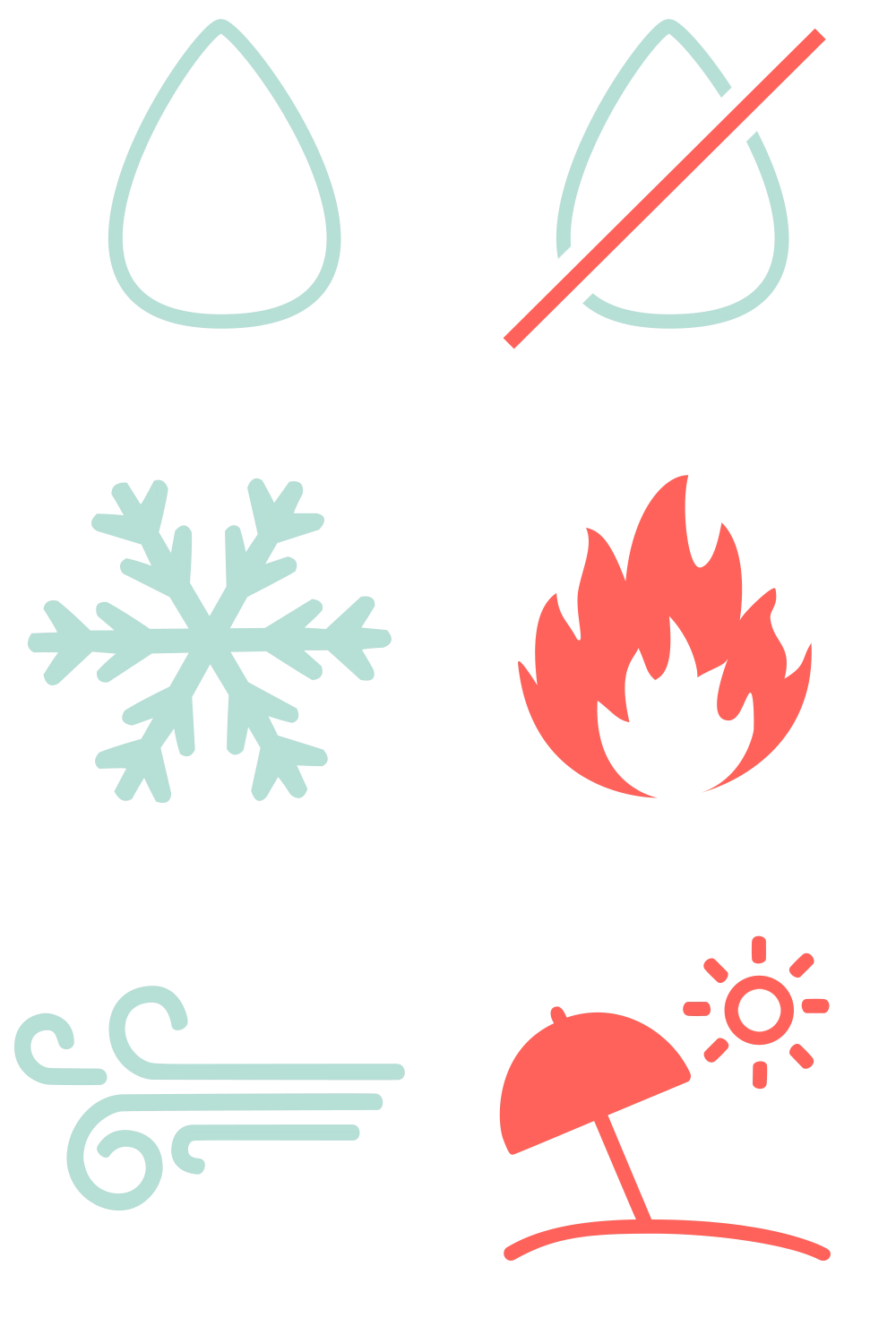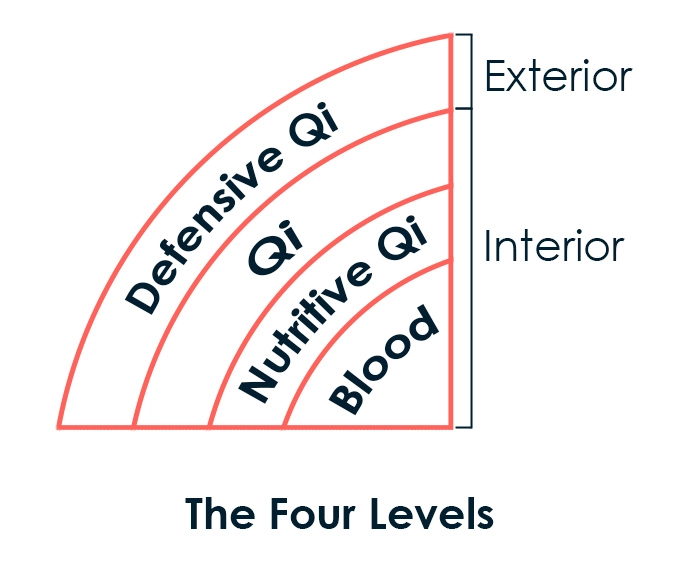
The 6 Pernicious Influences in Chinese Medicine
Chinese: 六淫 or 六邪 Pinyin: Liù Yín or Liù Xié
Summary: Also called the ‘Six Excesses’ or the 'Six Evils', the Six Pernicious Influences are the primary External cause of diseases according to Chinese Medicine. They are environmental factors which, when we are overexposed to them and/or have relatively weak defenses, can invade the body. The six pathogenic factors - namely Wind, Cold, Summer-Heat, Dampness, Dryness and Fire - are closely related to the weather and the seasons although, in the case of Wind for instance, they can be understand as a Chinese Medicine version of virus or bacteria.
The body is a dynamic balance of Yin and Yang and its various subcategories. When this balance is upset, the body may not be able to adjust to environmental changes. Likewise, when normal environmental forces become Excessive or occur unseasonably, and one's innate defenses are weak, the body reacts adversely to external climatic and environmental conditions. This is described as the 'Six External Pernicious Influences, or adverse climatic factors, invading the body and causing disease'.
These are:
The Six Pernicious Influences relate to the presence of these Influences in the dwelling and work place as well as outdoor climate. The Six Pernicious Influences invade the body either singly or in combinations. A few examples of these include Wind Cold type of rhinitis, Damp Heat symptoms of itching and oozing skin rashes, or even a Wind Cold Damp arthralgia.
The Six Pernicious Influences usually invade the body through the skin, mouth, or nose, while Wind frequently invades through the back of the neck. Such illnesses are called External Pernicious Influences. They usually come on suddenly, with no warning, and accompany sudden acute illnesses. They are characterized by aversion toward the particular Influence (such as fear of Heat or Cold, dislike of Wind or Dampness), fever, chills, body aches and general tiredness.
It is important to note that although the climatic causes of disease are important, in practice, Exterior pathogenic factors such as Wind Heat or Wind Cold are clinically more relevant as patterns of disharmony rather than as causes of disease. In other words, although the cause of a Wind Heat pattern may be said to be in some cases climatic Wind and Heat, it is the pattern of Wind Heat that is clinically significant and requiring treatment.
Climate as a cause of disease
Under normal circumstances, the weather will have no pathological effect on the body as it can adequately protect itself against Exterior pathogenic factors. The weather becomes a cause of disease only when the equilibrium between the body and the environment breaks down, either because the weather is excessive or because the body is weak relative to it.
Therefore, climatic factors become a cause of disease only when the body is weak in relation to them. It is important to stress here that the body is only relatively weak (i.e. in relation to the climatic factor), not necessarily fundamentally weak. In other words, one does not need to be very weak to be invaded by Exterior pathogenic factors. A relatively healthy person can also be attacked by Exterior pathogenic factors if these are stronger in relation to the body at that particular time. So, the relative strength of climatic factors and Defensive Qi is all important.
Each of the six Pernicious Influences is associated with a certain season during which it is more prevalent. For instance diseases caused by Wind relate to Spring, the Wood element and its two associated Organs, the Liver and the Gall Bladder. Heat and Summer-Heat relate to Summer and are associated with the Fire Element involving the Heart and circulation; and the Earth Element involving digestion, assimilation includes the Stomach and the Spleen. Dampness relates to both humidity and Winter weather, which stresses the Earth Spleen function of assimilation and digestion. Dryness, associated with Autumn, can injure the Metal Lungs function. Finally, Cold is associated with Winter and can injure the Water Kidneys Adrenals, which are the root of Yin and Yang for the entire body.
In fact though, with the exception of Summer-Heat, any of the climatic factors can arise in any season: it is not at all uncommon to have attacks of Wind Heat in winter or Wind Cold in summer. Summer-Heat, however, can arise only in the Summer. Living conditions also determine which climatic factor invades the body. For example, living in a Damp house will cause invasion of Exterior Damp irrespective of the season.
Fire is also a special case because, although it can be associated with the season of summer, it is actually primarily an Internal pathogenic factor and therefore independent of seasons.
Is 'Wind' akin to bacteria and viruses?
It is telling that the traditional character for ‘Wind’ (風, Fēng) contains within itself the one for ‘Insect’ (虫, Chóng): it could be construed that this is a very early view that some diseases are caused by small organisms (‘insects’, i.e. bacteria and viruses) carried by Wind.
While in Western Medicine acute respiratory diseases are seen as caused by an invasion of the body by bacteria or viruses, Chinese Medicine explains it with an invasion of ‘Wind’ or other climatic pathogenic factors. The idea that climatic factors can be a direct cause of disease is of course a typical Chinese idea and one that is totally alien to modern Western Medicine.
Chinese Medicine holds that an Exterior pathogenic factor invades the body when there is a temporary imbalance between a climatic factor and
the body’s Qi at that particular time. Thus, while Western Medicine places the emphasis on the external aspect of the disease (i.e. the invasion of bacteria and viruses), Chinese Medicine places the emphasis on the temporary imbalance between the External causes of disease and the body’s Qi.
As it takes into account the strength of the body’s Qi, this view of the pathology of Exterior, acute diseases is more comprehensive than that of Western Medicine and, most of all, it allows for preventive interventions by strengthening the body’s Qi.
The 'Four Levels' theory
Towards the end of the Ming (1368–1644) and the beginning of the Qing (1644–1911) dynasty, a new school of thought regarding Exterior diseases emerged. This school concentrated on the study of diseases caused by Exterior Wind Heat and the school came to be known as "the School of Warm Diseases" ("Wen Bing" school).
Warm Diseases are all caused by Exterior Wind Heat in the beginning stages and they share common characteristics, the recognition of which was very innovative in Chinese Medicine. These characteristics are:
- They are all caused by Wind Heat in the beginning stage
- The patients have fever
- The pathogenic factor penetrates through nose and mouth (as opposed to skin in the case of Wind Cold)
- The Wind Heat has a strong tendency to turn into Interior Heat rapidly
- They are characterized by rapid changes
- Once in the Interior, the Heat tends to injure Yin rather quickly
Ye Tian Shi (1667–1746) formulated the theory of the Four Levels to describe the pathological changes resulting from invasion of Wind Heat in a Warm Disease.
The Four Levels are the Defensive Qi (Wei Qi), Qi, Nutritive Qi (Ying Qi) and Blood (Xue) levels. The first level describes the pathological changes when the pathogenic factor (Wind Heat) is on the Exterior. The other three levels all correspond to Interior Heat: that is, the External Wind Heat has become Interior and transformed into Heat. However, the three levels Qi, Nutritive Qi and Blood reflect three different depths of penetration by the Heat (with Blood being the deepest).

Different from the "Internal Pernicious Influences"
When the Internal Organs are imbalanced, or there are pathological changes caused by bacteria, chemicals or other factors in the body, syndromes similar to Wind, Cold, Heat, Dampness, Dryness and Summer Heat may occur. Because their characteristics are similar, they are distinguished from the six External Influences and named Internal Pernicious Influences. In this case, the body manifests similar signs and symptoms to those of the External Influences with an important difference: the illness does not usually come on suddenly nor are there normally fever or chills. They are often related to chronic diseases. All Pernicious Influences, however, reflect their climatic conditions and are treated accordingly.
The theory of Root and Branch
While the six Pernicious Influences can be the direct cause of disease, a Deficiency of Qi, Blood, Yang or Yin can often be the predisposing underlying cause. This, according to the theory of Root and Branch, designates the Pernicious Influence as the Branch and the underlying Deficiency as the Root. For example, when there is Blood or Yin Deficiency in the body (root), it can stir up Wind (branch); Qi or Yang Deficiency (root) makes the body more susceptible to Cold (branch); Yin Deficiency or Stagnation (root) can lead to Heat (branch); and Yin or Blood Deficiency (root) can result in Dryness (branch). Treatment of a Pernicious Influence must focus first on clearing the presenting branch symptom, if possible, and second on the underlying root cause. Formulas usually reflect this by using appropriate tonic herbs in smaller amounts than the primary herbs included for branch symptoms.
To read about each of the Six Pernicious Influences in more details, go to their corresponding pages:
